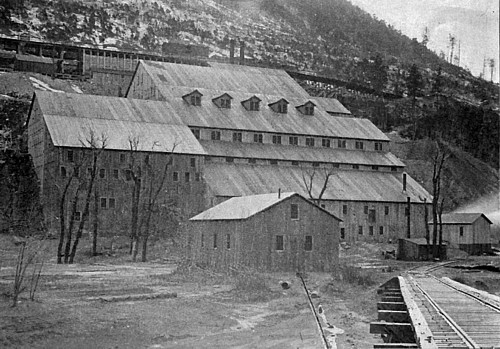The US has produced copper from a number of areas in the east as well as the mountain west. The mining of these deposits were all important in the development of the early US economy. The most important copper mining regions in the US form into five distinct belts: (1) The Appalachian belt; (2) the Lake Superior region; (3) the Cordilleran section; (4) the Pacific Coast belt, and (5) the Alaskan belt. In each of these regions, there are multiple mines that have been important copper producers. Copper ores are found in many geologic formations ranging from the pre-Cambrian to the Tertiary, and the deposits have been formed in many different ways. Indeed in some cases more than one mode of origin may be represented by the deposits of one locality (Clifton, Arizona; Bingham, Utah), which makes it a little difficult to separate the different occurrences sharply on genetic grounds. Then too, a difference of opinion sometimes exists regarding the origin of some one deposit (such as RioTinto, Spain).
A rough grouping might therefore be made as follows: 1. Magmatic segregations; 2. Contact-metamorphic deposits, in crystalline, usually garnetiferous limestone, along igneous rock contacts. (Clifton-Morenci, Ariz., Bingham, Utah, etc.); 3. Deposits formed by circulating waters, and deposited in fissures, pores, or other cavities, or by replacement. - A. By ascending hydrothermal waters. Copper veins or lodes carrying tourmaline as a high temperature index mineral have been described from a number of localities. B. By waters, probably of meteoric character, and unassociated with igneous rocks.; 4. Lens-shaped deposits of variable origin in crystalline schists. All of these except the first have important representatives in the United States, but in many cases their commercial value depends on secondary enrichment and not the mode of primary deposition.
Secondary alteration and enrichment may produce results of great economic importance, and excellent examples of it are seen in some of the Arizona copper ores, where the upper portions of the copper deposits are brown or black ferruginous porous masses, brightly colored with oxidized copper minerals such as cuprite, malachite, azurite, and chrysocolla, while below this at a variable depth they pass into sulfides. In weathering, the copper minerals, such as chalcopyrite or other sulfides, are usually oxidized first to sulfates, and subsequently changed to oxides, carbonates, or silicates, and occasionally even to chlorides. A concentration of the ore deposit may take place partly by segregation and partly by leaching, and pockets of the copper ore form, which are surrounded by oxidized iron minerals forming part of the gangue.
While the oxidation will not increase the total copper content of the ore body, still it may change it into a more concentrated and enriched form, for the carbonates and other oxidized copper minerals contain in total more copper than the original sulfide. The ore in the goethite gossan may therefore run from 8 to 30 per cent or more, while below it may show only 5 per cent of copper. These altered ores cannot, however, be more cheaply treated. If leaching follows oxidation, the gossan may be freed of its ore, as at Butte, Montana, where the upper part of the ore-bearing fissures is poor siliceous gangue.
Below the zone of oxidation, there often lies a zone of secondary sulfide enrichment, of variable depth, followed still lower down by the primary ore. But even with secondary enrichment, the deposit may not carry more than 2 to 3 per cent of copper, and yet because of its concentrating possibilities and size be worth working. The processes of secondary enrichment have been referred to, and it was shown there that the work of Graton and Murdock has demonstrated that the change is not as simple or direct as was formerly thought. Quartz is the commonest gangue mineral in most copper deposits, but calcite and siderite are abundant in a few; barite, rhodochrosite, and fluorite are also known. Sericite is found in some veins, and so is tourmaline in certain tin-copper and copper – gold ores.
IMPORTANT US COPPER MINING DISTRICTS INCLUDE:
7) Ajo, Jerome, New Mexico, etc.
8) California and the Pacific Coast
Return To: Copper Ores

